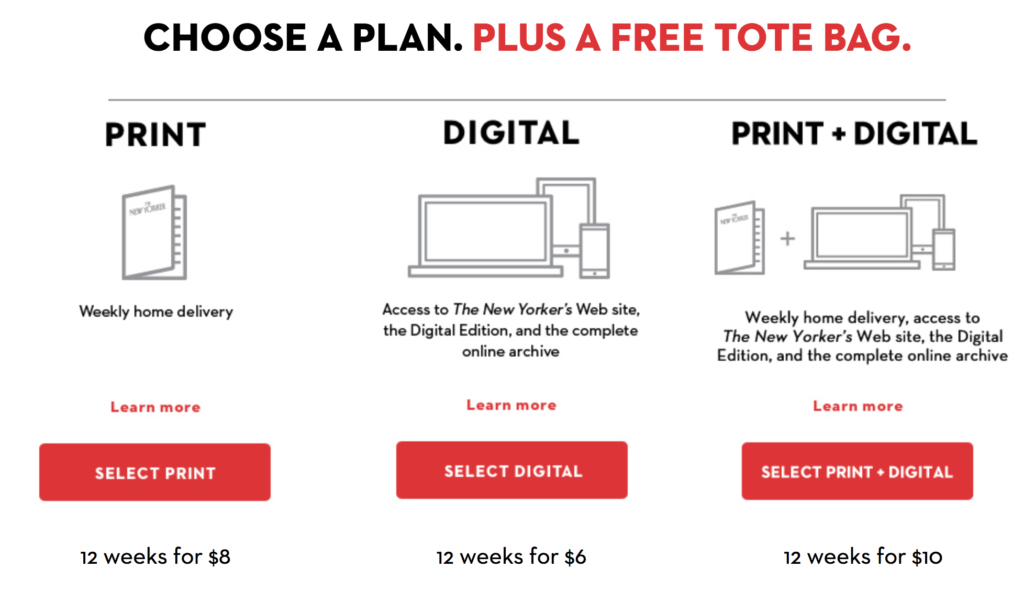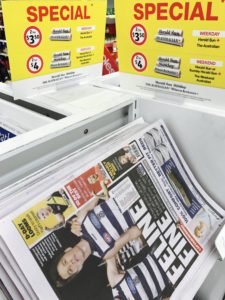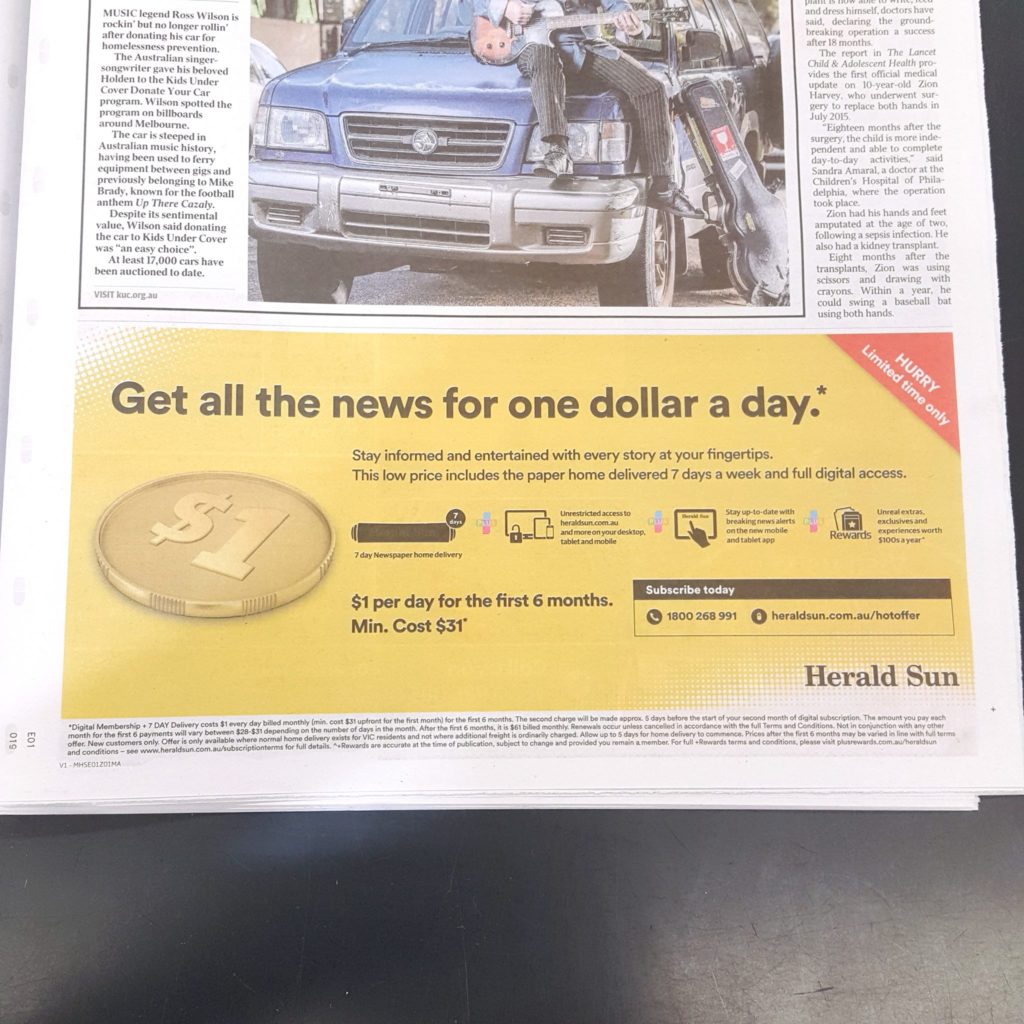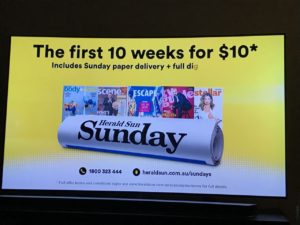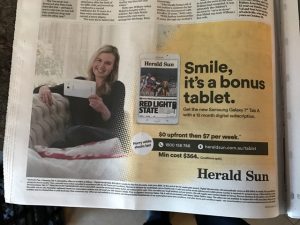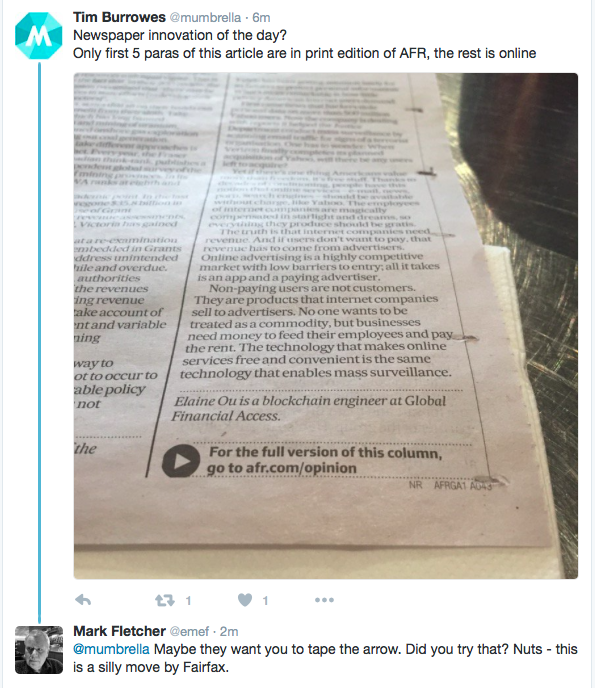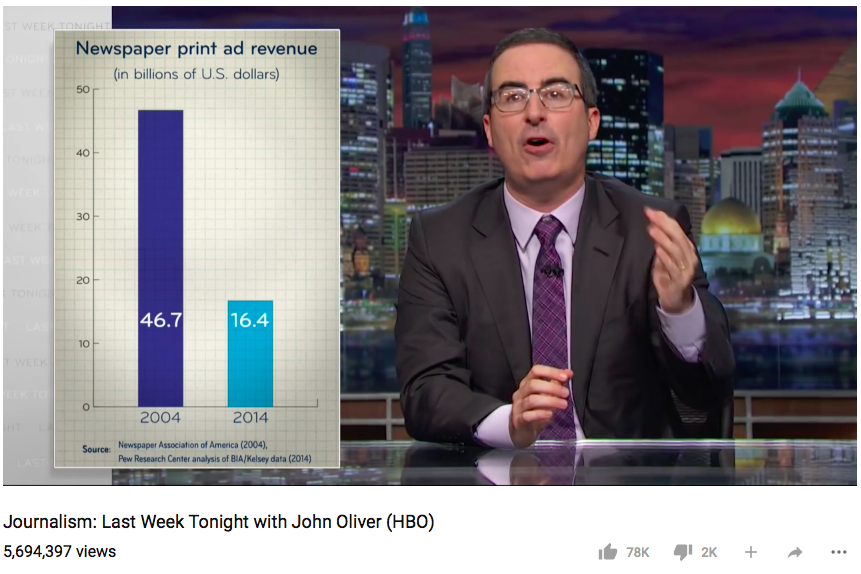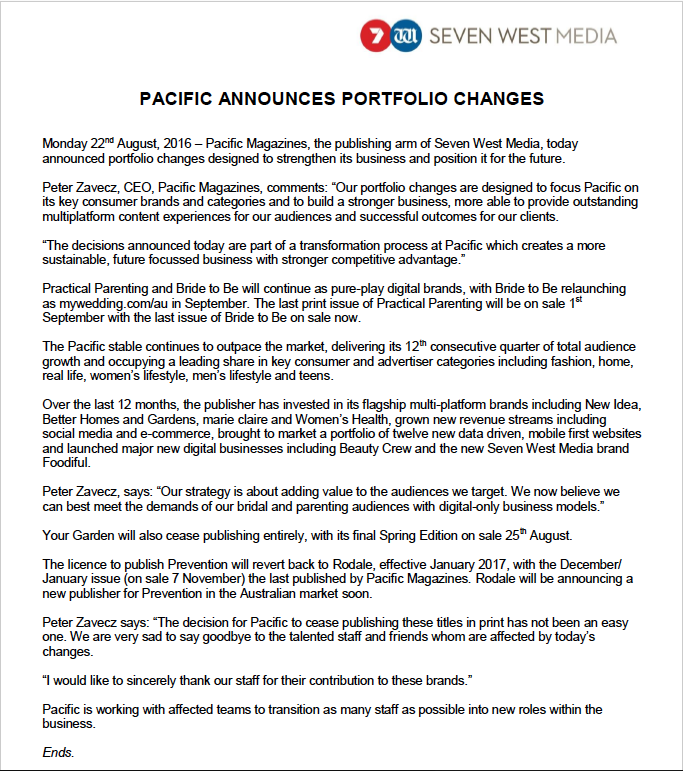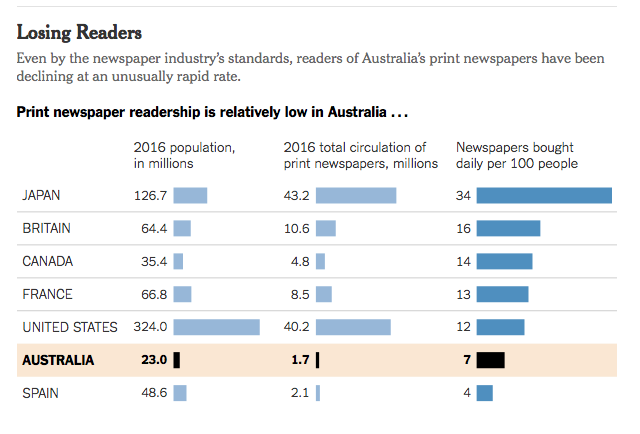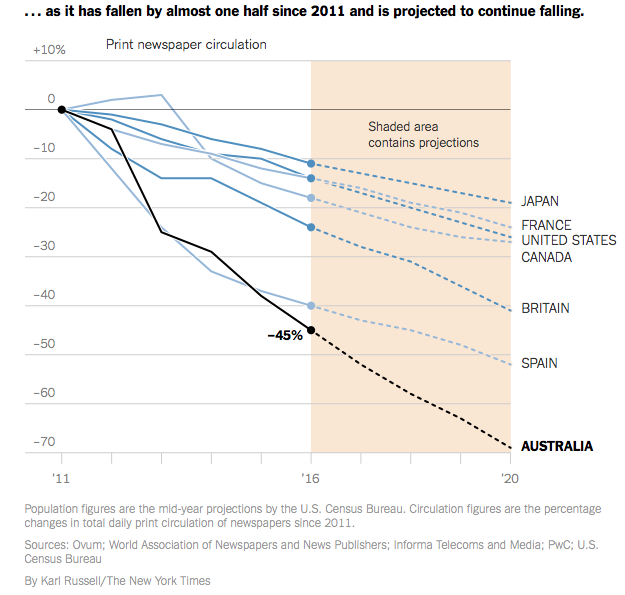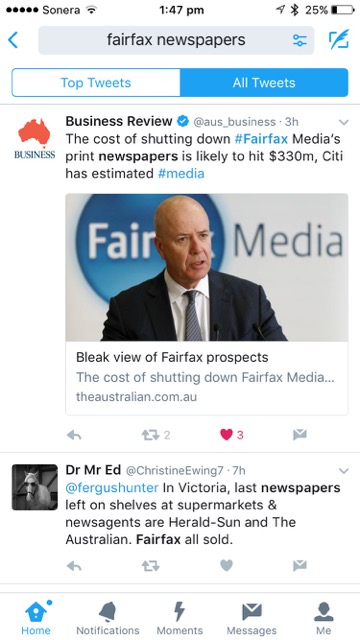 I have no doubt we will soon hear from Fairfax that they plan to cease daily publication of some or all of their capital city daily newspapers. The circulation numbers are such that several days a week the production and distribution costs are not covered by sales and ad revenue.
I have no doubt we will soon hear from Fairfax that they plan to cease daily publication of some or all of their capital city daily newspapers. The circulation numbers are such that several days a week the production and distribution costs are not covered by sales and ad revenue.
I suspect the future structure of the total Fairfax business will play a role in the timing of any announcement. There are reports of discussions with Nine Entertainment.
Fairfax is not the only newspaper publisher in Australia or the world facing the challenge of the future of its print product.
Every newspaper is in the same boat thanks to the disruption driven by mobile technology and social media that has fundamentally altered how, when and where we consume news.
There is a new challenge to what constitutes news. Thanks to better data on what people read, news outlets are more prone today to publish fake news, junk content and puffery than they would have back when they only had the print product. Publishers are pandering to what people like rather than publishing news.
You only have to look at the US election to realise the crisis confronting news outlets. News is not valued as it once was. We are in an era of celebrity where the opinions of a few matter more than irrefutable facts. The opinions of these few are soon spread as news thanks to the megaphone of social media.
This shift has been driven by social media platforms such as Facebook, Twitter and Instagram and the opportunity for everyone to be a publisher, an immediate, unedited, unmoderated publisher.
Ad revenue is a problem for print newspapers. It has all but collapsed for print newspapers. Okay, maybe collapsed is too dramatic a term. But it has declined considerably year on year for several years. This challenges the model of the physical product.
Also, Today there is a proliferation of news outlets we did not have in Australia just a few years ago.
If the numbers don’t work, the publisher has to make the tough call. It is all about the numbers.
As is their want, News Corp. is obsessed with when Fairfax will transition from daily publishing of the print product to another model. Their latest report, in The Australian, claims a cost of $330M projected by Citi, to be faced by Fairfax of they make such a move.
The obsession by News is not unusual given the rivalry between the two publishers and that Fairfax has more respect as a trusted news publisher than News. If News was committed to news, The Australian would report on the company’s own considerations and plans. I expect there are daily newspapers in its stable that do not pay their own way today, newspapers delivering mounting financial losses to the company’s balance sheet – if only the results were reported so this could be seen.
While this is interesting to watch, newsagents need to act. These changes are coming. Soon, daily newspapers will disappear, not all, but certainly some. When that first one goes, it will be a shock to many newsagents. It should not be a shock though. Smart newsagents have new traffic strategies in place that are bringing in new customers to purchase non circulation items.
What does your business look like without newspapers?
How do you consider yourself running a business without newspapers?
Are you ready in terms of your business plan?
Are you ready for how your bank will react?
Are you ready for how your landlord will react?
Are you ready for the doom and gloom reports that will defend upon the channel when the first paper closes? Can you weather it because it will be tough with our channel more tightly aligned with newspapers than any other single retail channel in Australia.
Are you working on your business now so it is ahead of the wave of change that will follow any closure of a major daily newspaper?
Or are you waiting for it to happen before you make any moves? If this is you, that approach will be too late.
Acting today involves placing newspapers in the most cost effective location in-store and reducing the visual impact of papers to messaging for your business. It requires you to engage with multiple strategies for attracting new shoppers into the business. And it involves you re-casting the image of your business in your external marketing. These points are just the start.
Look at your business data. Understand the role newspapers play: How often are newspapers purchased alone versus with other items? This and related analysis can help you understand the impact should daily newspapers cease in your area.
The report in The Australian is not relevant to the timing as Fairfax will make the decision based on the economics of the print operation – just as they have made decisions to cut their workforce several times in recent years based on operating costs. The cost of the decision is a cost of business, to be borne over time.
 The New Yorker is running a sizeable campaign on Facebook inn Australia pitching twelve weeks of the weekly magazine for $6.00.
The New Yorker is running a sizeable campaign on Facebook inn Australia pitching twelve weeks of the weekly magazine for $6.00.